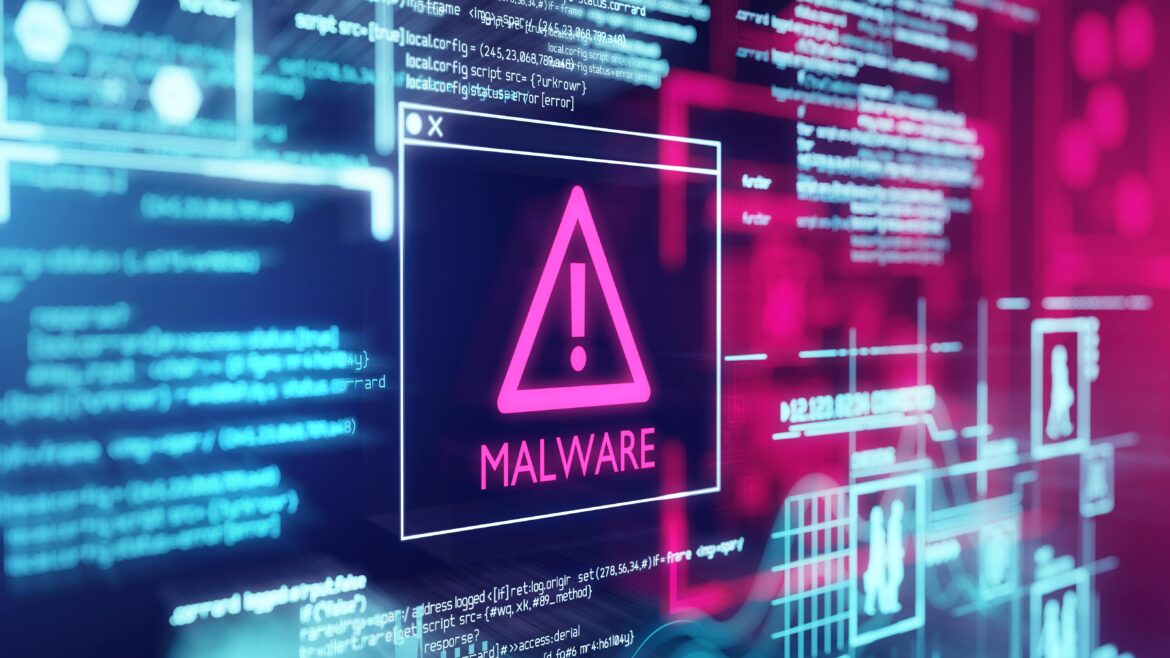Malware, short for malicious software, has been a toxic issue since the internet was created back in 1983. According to Microsoft, malware refers to “any software designed to cause damage to a single computer, server, or computer network.” Malware can infect anyone’s hardware, from your credit union employees to your members, and if the user is not careful, sensitive information such as bank account credentials or social security numbers can be leaked. Viruses can be injected into the computer, damaging programs and the operating system alike.
There are many forms of malware, the main offenders being:
Worm
A worm is a self-contained application that can copy itself and transfer itself across a network. Its goal is to overtake the entire network, spreading across systems and infecting other computers. Not only does the worm spread, but it can also cause an attack that can delete files or pull sensitive information from the network. They often utilize parts of technology that are typically hidden from the user and may not be recognizable as an infection and tend to target existing vulnerabilities in operating systems. An example of a worm would be ILOVEYOU, which was a 2000 worm that was spread via email, and came loaded with an attachment that would trigger a script when opened. The worm would first overwrite random files and send copies of itself via Microsoft Outlook, spreading the worm to all emails in the users address book.
Trojan
Based off of the famous Trojan Horse used by the Greeks, this is a form of malware that disguises itself as something the user would want, which would cause them to let the application bypass any internal defenses the user’s computer has. These are generally used to damage or take over the computer with the trojan. A trojan can be a program that the user believes is legitimate, but when opened creates a backdoor that allows the cybercriminal access to the user’s network, which can be used for a variety of hostile behavior such as dropping in other forms of malware.
Virus
Properly named, a virus in technology is a form of malware that attaches itself to legitimate code and spreads wherever it can to take over computers or damage them. A virus needs a host and cannot work alone. By feeding off of real code, the virus will spread when the host application is executed. One virus, labeled Slammer, was a denial of service that infected over 75,000 hosts in just a few minutes, including Bank of America’s ATM service, airlines, and other electronic services (all of which shut down due to program issues). The cost of the virus infection was estimated to be over $1 billon.
Spyware
Spyware is stated by Webroot as a broad category of malware used for the purpose of secretly gathering data on an unsuspecting user. Spyware typically targets login credentials and personal information to be used by the hacker or sold off to a third party that can utilize your info, such as emails and addresses. An example of spyware would be keyloggers. Keyloggers are hidden programs that track the mouse clicks and key strokes of the end user, which can be used to gather information such as credit card numbers, social security numbers, and passwords. This information can then be sold via the dark web, where anyone could have access to your data.
Adware
Adware is a category of software applications that displays advertisements on computers or changes search results in browsers to earn money for their creators from user clicks. Though not always malicious, adware can slow down the user’s computer with frustrating popups and advertisements. Most adware is actually approved by authors, and can usually be found when the user is installing the software. This is a very common form of malware, and is often shown in movies and tv shows.
Ransomware
Ransomware can be explained just by the name. The person who infects the user’s computer will lock files and hold them ransom. The user then either pays to have them unlocked (with cryptocurrency, typically), but there is no guarantee the infector will release the files. Ransomware has been on the rise over the past few years, and is typically aimed at large businesses. In recent years, ransomware has come up on the rise with the popularity of Bitcoin and other cryptocurrencies. The most recent large-scale attack was WannaCry, which would hold large industries such as hospitals and mobile companies hostage. The attackers refused to release their systems without being paid millions in cryptocurrency. It was estimated that the damages from WannaCry attacks cost over $4 billion.
Malvertising
This is a form of malware that has to do with advertising. Essentially, the cybercriminal will buy legitimate ad space on a popular website, such as famous news sources and stock exchange websites. While the space for the ad was legally purchased, the links can contain malware or redirect the user to an unsafe website which can contain viruses or attempt to steal their personal information. These can be potentially found on any website offering ad space, as the owner of the website has no control over the links the ads redirect to.
Spoofing
Spoofing is the act of disguising a communication from an unknown source as being from a known, trusted source. This can apply to phone calls, emails, and websites. Spoofing is fairly common in emails—the user will receive an email from the cybercriminal posing as a person or business asking for a response or to open a malicious file. More committed hackers will replicate a website and hope the user doesn’t recognize the difference, and can potentially insert login credentials that can be stolen. Spoofing is fairly common in financial institutions. Credit union and bank websites are consistently spoofed in hopes that the end user will input their login credentials to sign in to online banking.
The solution to malware
The process of removing malware can range from being fairly simple to impossible without a clean wipe. Some simple programs can be removed to stop the attack while others may be impossible to find or have spread to so many components that the infection is too widespread to repair. Taking your computer in to a professional to clean does not always work and can be an expensive service, therefore, prevention is always the best solution.
Users should invest in anti-malware software for their computers and frequently run scans with it. Always run security updates—hackers are finding new ways to infect computers each day and programs need to consistently update to keep up. Even this is not enough, though. Awareness is key—users should always be careful of what they click on, where they input sensitive information, and should take care to recognize illegitimate emails and programs.






























































